At the end of this renewable energy resources lesson plan, students will be able to research and debate the advantages and disadvantages of renewable energy resources. Each lesson is designed using the 5E method of instruction to ensure maximum comprehension by the students.
The following post will walk you through each of the steps and activities from the renewable resources lesson plan.
ENGAGEMENT
Objective Introduction
At the beginning of the lesson, the class will do a Think-Pair-Share to discuss the objective.
Class Activity
- Review what students may already know about renewable and nonrenewable resources.
- Give students triads 9 post-it notes. Have them copy the 9 provided words you wrote on the board. You might consider giving the triads numbers or letters to identify their group. They could put this on their post-its, and this will help you in asking groups to justify their answers.
Student Activity
- Ask students to come up and put their post-it under the correct title on the T-Chart.
- Look for similarities and differences in their answers. If you’ve identified the groups, you can ask them “why” they put their post-it where they did.
- Arrange the post-its correctly.
- Have them make a copy of the T-Chart in their notebook and list the energy types under the correct title. (Nuclear is considered non-renewable.)
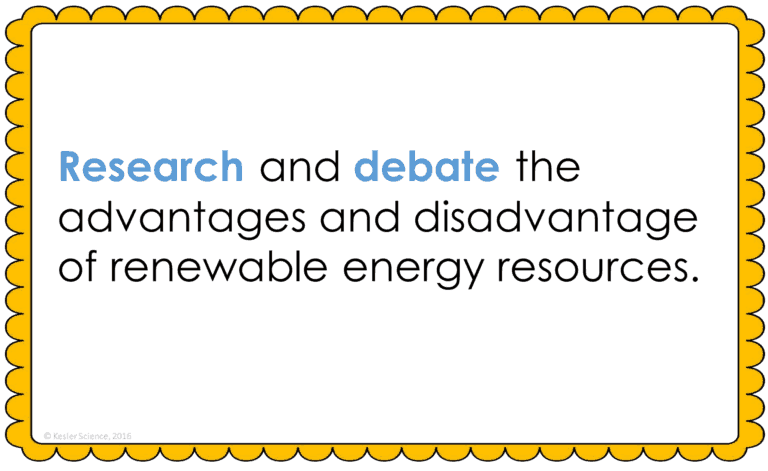
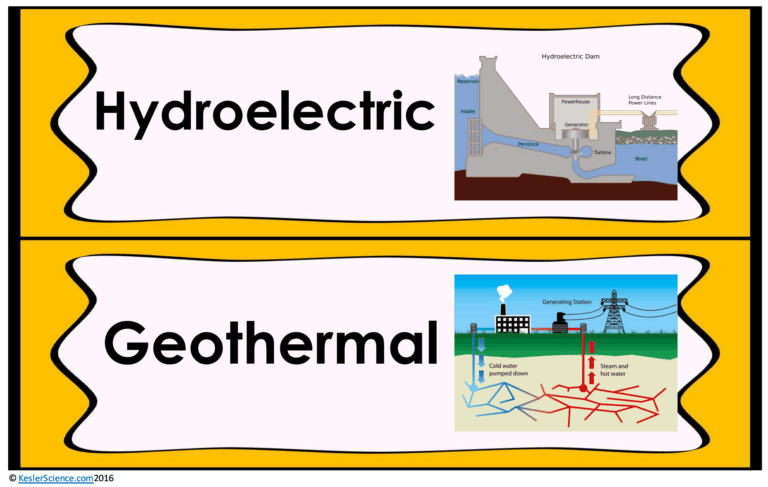
The teacher will help to clear any misconceptions about renewable energy resources. A major misconception is that students do not understand that the amount of energy used to produce renewable energy can sometimes be excessive, that non-renewable resources are not available everywhere, or the environmental impact of fossil fuels.
Estimated Class Time for the Engagement: 20-30 minutes
EXPLORATION
This student-centered station lab is set up so students can begin to explore renewable resources. Four of the stations are considered input stations where students are learning new information about renewable resources and four of the stations are output stations where students will be demonstrating their mastery of the input stations. Each of the stations is differentiated to challenge students using a different learning style. You can read more about how I set up the station labs here.
EXPLORE IT!
Students will be working in pairs to better understand nonrenewable resources. In this station, students interact with labels as they try to identify the types of renewable resources. Students will follow the steps and record their observations on their lab sheet.
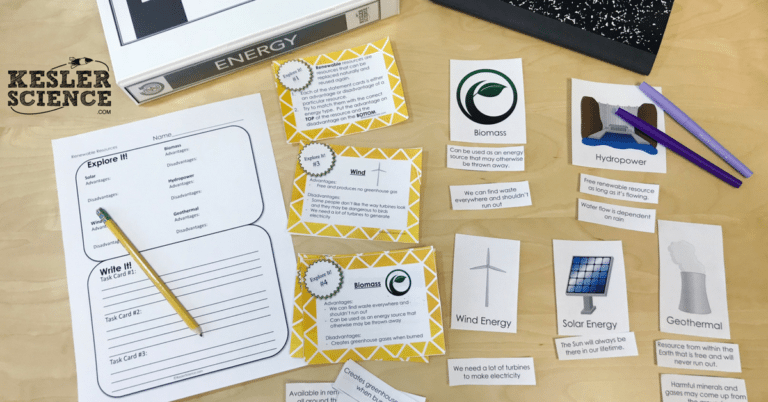
WATCH IT!
At this station, students will be watching a short video explaining renewable resources. Students will then answer questions related to the video and record their answers on their lab station sheet. For example: According to the video, what are the advantages and disadvantages of wind energy? How can water be used as a renewable resource? What are some disadvantages to using water as a renewable energy? What are the advantages and disadvantages of solar energy?
RESEARCH IT!
The research station will allow students to explore an interactive web page that helps them to understand renewable resources. Students will be instructed to complete a few tasks and record answers on their lab sheets.
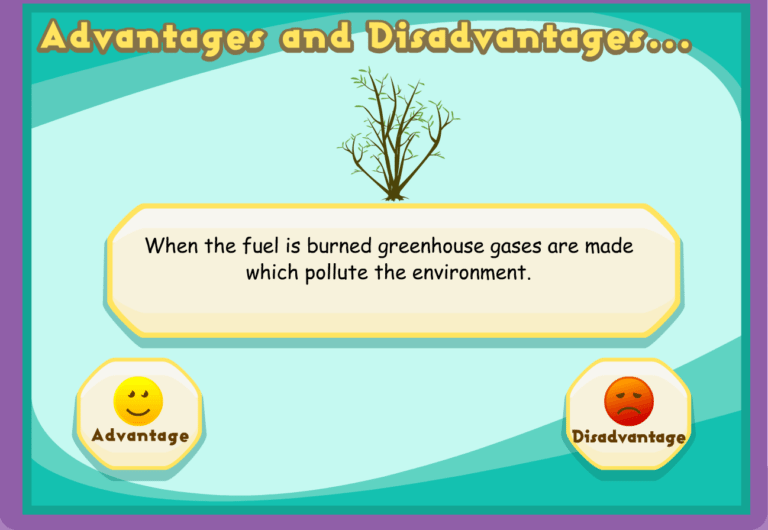
READ IT!
This station will provide students with a one page reading about renewable energy. There are 4 follow-up questions that the students will answer to show reading comprehension of the subject.
ASSESS IT!
The assess it station is where students will go to prove mastery over the concepts they learned in the lab. The questions are set up in a standardized format with multiple choice answers. Some questions include: Which is an advantage of biomass energy? What is an advantage of hydropower energy? What is the best description of a renewable resource? Which renewable energy has the disadvantage of polluting the atmosphere when burned?
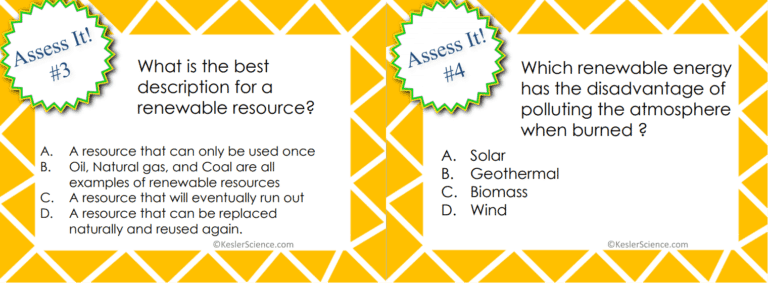
WRITE IT!
Students who can answer open-ended questions about the lab truly understand the concepts that are being taught. At this station, the students will be answering three task cards: How are renewable resources different from nonrenewable resources? Why do you think the world had not moved over to be 100% dependent on renewable energy? Pretend Galveston, Tx has installed wave energy generators. What disadvantages might arise from this?
ILLUSTRATE IT!
Your visual students will love this station. Students are to draw pictures that demonstrate their knowledge of renewable resources (solar, wind, and hydroelectric).
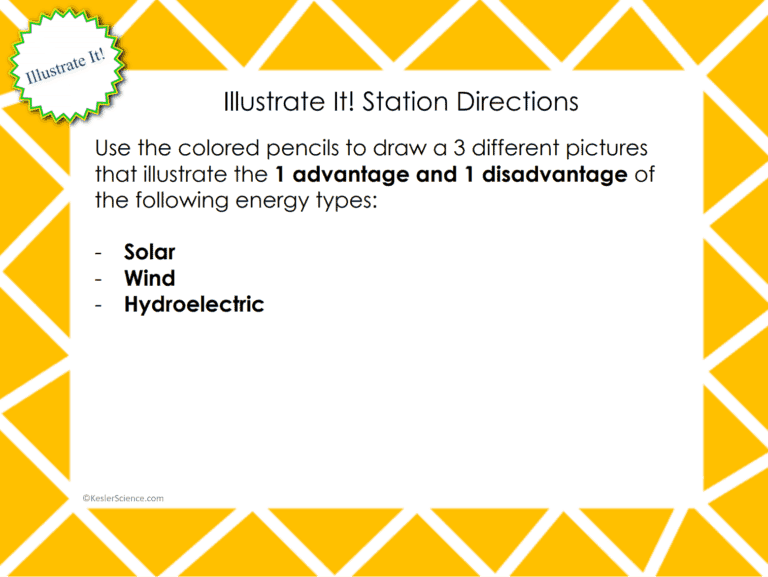
ORGANIZE IT!
Students at this station will match the sets of cards. Cards include objects and renewable resources that the students will determine which match together. Once students have completed their organization, the teacher will check their understanding.
Estimated Class Time for the Exploration: 1-2, 45 minute class periods
EXPLANATION
The explanation activities will become much more engaging for the class once they have completed the exploration station lab. During the explanation piece, the teacher will be clearing up any misconceptions about renewable resources with an interactive PowerPoint, anchor charts, and notes. The renewable resources lesson includes a PowerPoint with activities scattered throughout to keep the students engaged.
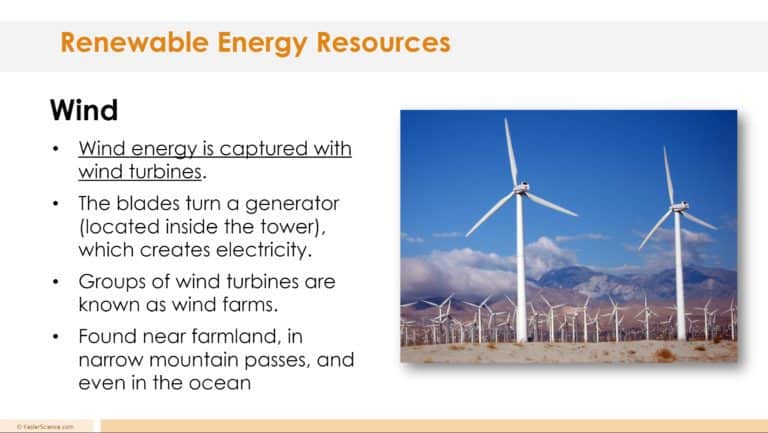
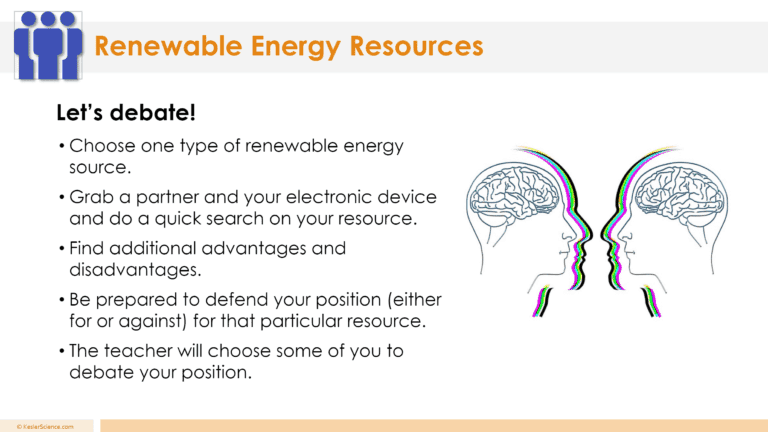
The students will also be interacting with their journals while taking notes from the PowerPoint. If you have students that need modified notes, the 5E lessons come equipped to help give every student access to the lesson.
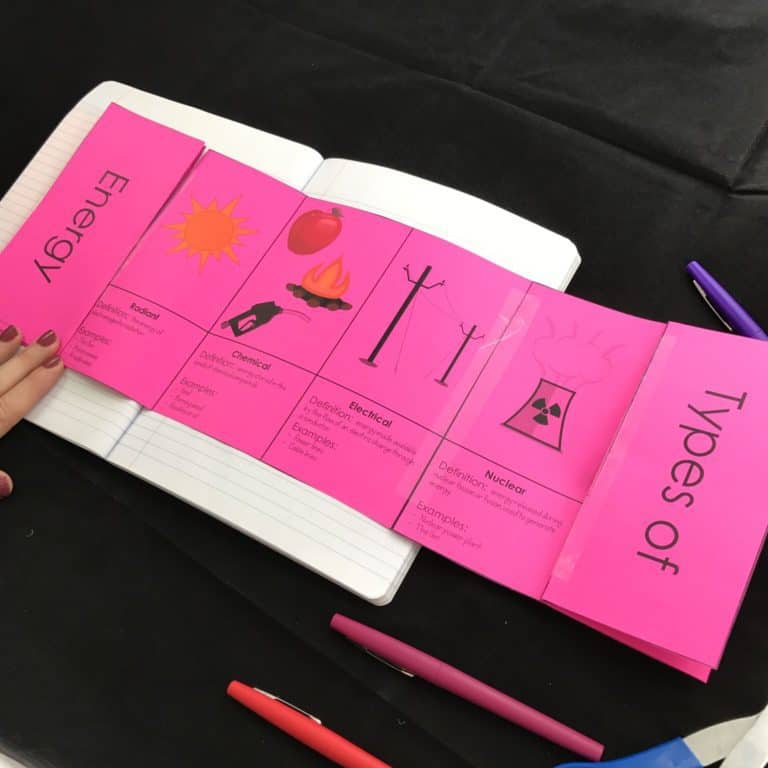
Estimated Class Time for the Exploration: 2-3, 45 minute class periods
ELABORATION
The elaboration section of the 5E method of instruction is intended to give students choice on how they can prove mastery of the concept. When students are given choice the ‘buy-in’ is much greater than when the teacher tells them the project they will have to create. The elaboration project will allow students to create a choice about biomass, solar, wind, hydroelectric, geothermal, or even come up with their own energy plan.
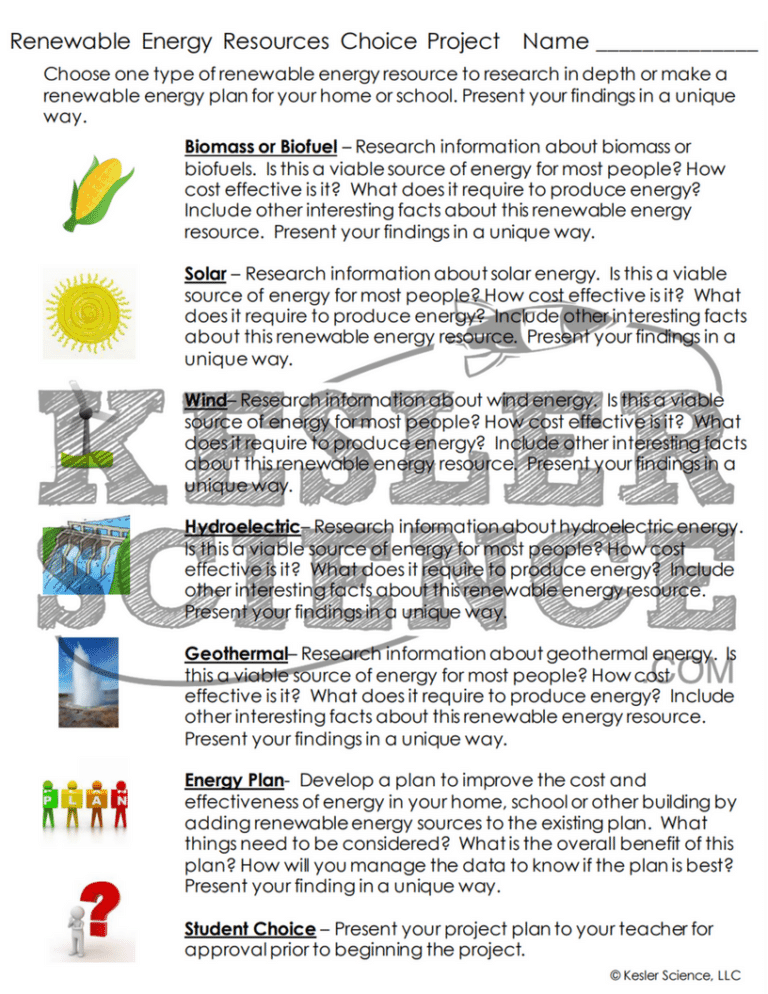
Estimated Class Time for the Elaboration: 2-3, 45 minute class periods (can also be used as an at-home project)
EVALUATION
The final piece of the 5E model is to evaluate student comprehension. Included in every 5E lesson is a homework assignment, assessment, and modified assessment. Research has shown that homework needs to be meaningful and applicable to real-world activities in order to be effective. When possible, I like to give open-ended assessments to truly gauge the student’s comprehension.
Estimated Class Time for the Elaboration: 1, 45 minute class period
DOWNLOAD THE FULL LESSON NOW
The full lesson is available for download from my TpT store. Save yourself a ton of time and grab it now.
Download Over $100 in FREE Resources
For Middle School Science
Simply create a login below and gain immediate access to a selection of our Kesler Science product line worth $100 - for FREE. There's a full version of every product type! You'll also join tens of thousands of middle school science teachers who receive timely tips and strategies straight to their inbox.





